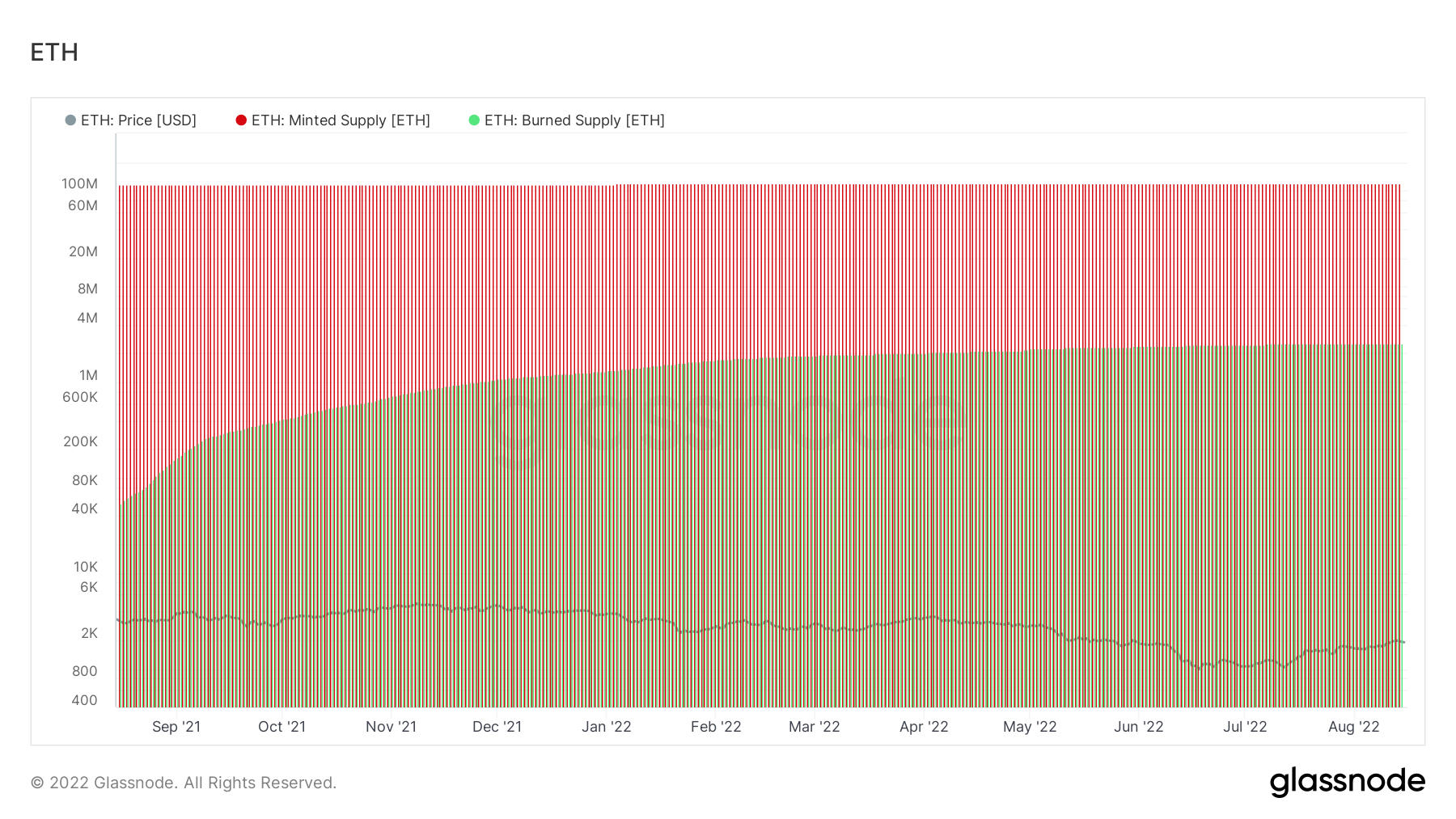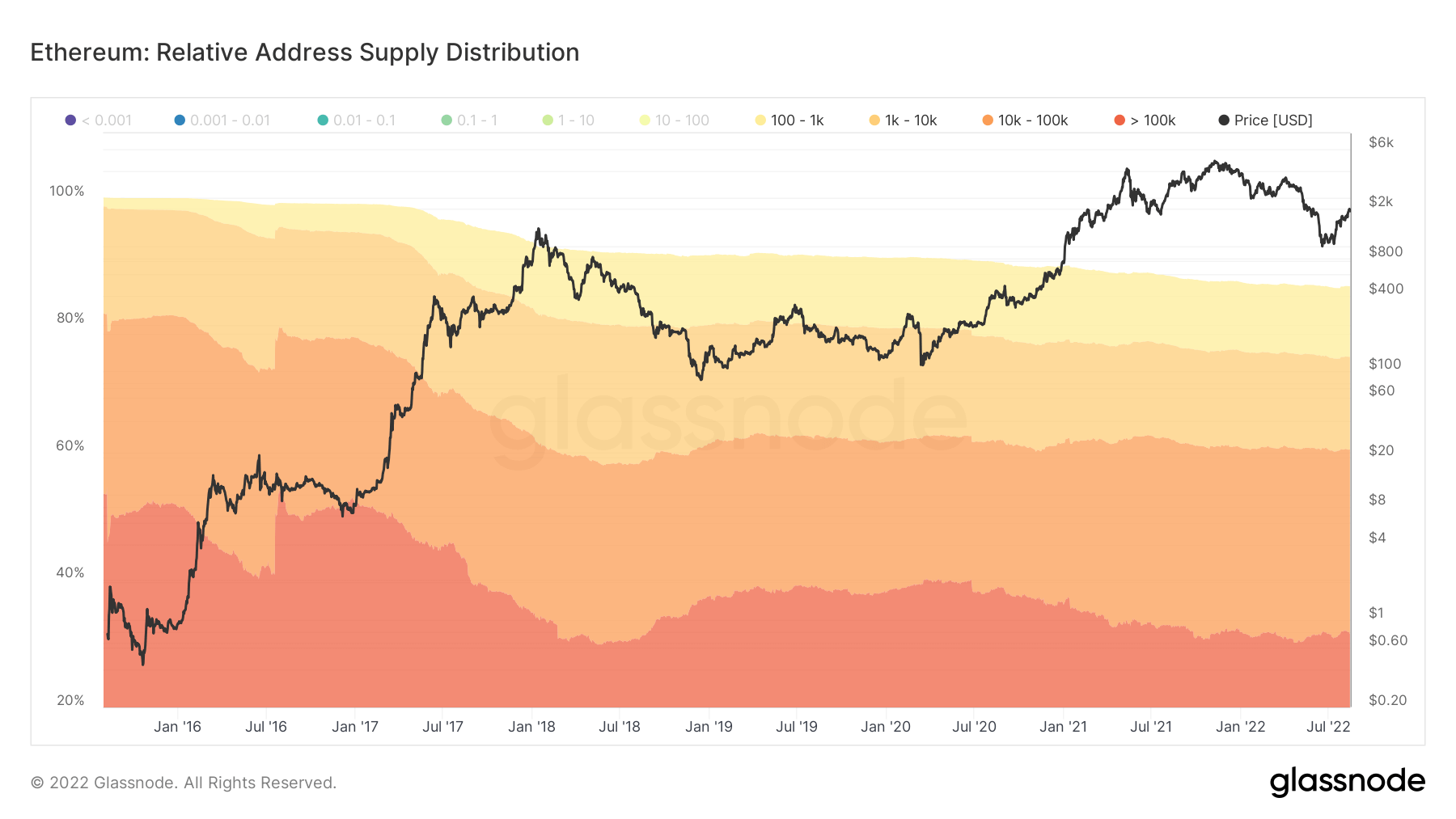Ethereum is neither decentralized nor deflationary

Ethereum is the foundation of the decentralized financial ecosystem and is automatically classified as a decentralized network. On paper, Ethereum is a decentralized, democratic network based on a deflationary currency.
In fact, it is neither decentralized nor deflationary.
fight against deflation
In September 2021, Ethereum’s London hard fork introduced EIP-1559, an upgrade set that significantly changes how the network works. The upgrade will allow the network to consume a portion of the gas bills paid by users, permanently reducing the supply of ETH. ETH’s continued declining supply is expected to exceed the daily rewards paid to miners, turning ETH into a deflationary currency.
However, the ETH burn rate never exceeded the ETH mint rate, as shown in the graph below.

Declining activity on Ethereum is the biggest factor preventing the burn rate from overtaking the mint rate. For Ethereum to become a deflationary currency, the amount of ETH burnt for gas fees must exceed the amount of ETH issued to be distributed as block rewards.
last year, average 13,000 ETH were distributed daily as block rewards.To burn more than 13,000 ETH in gas prices, the Ethereum network requirement We see an average base gas price of around 130 gwei.

However, since the beginning of the year, Ethereum’s average gas price has rarely exceeded 130 gwei. Outside of his two peaks recorded in May, gas prices have been below 60 gwei since April, according to YCharts data. Since early July, the average price has been below 20 gwei.

The rising price of Ethereum, which continues to defy general market trends, could be one of the factors driving down activity on the network. The price increase is in turn a direct result of increased speculation surrounding an Ethereum merger. As CryptoSlate has previously covered, increased speculation is evident in the derivatives market, with open interest in ETH option contracts surpassing his open interest in BTC for the first time.
Resistance to decentralization
Ethereum has even more problems when it comes to decentralization.
More than 85% of Ethereum supply is held by entities with 100 ETH or more, according to Glassnode data. About 30% of that supply is in the hands of entities above 100,000 ETH.

Ethereum’s upcoming move to a Proof-of-Stake (PoS) network raises further questions. His PoS network in the future will require validators to stake a minimum of 32 ETH, effectively precluding smaller players from securing the network. Ethereum’s beacon chain already has a set of validators that show what the network will look like after the merge.
The majority of beacon chain validators are large entities, ranging from established exchanges to newly established staking providers holding large amounts of ETH. The majority of Ethereum validators are legal entities registered in the US and EU, and as such are subject to local regulations.


Just under 69% of the total money wagered on the beacon chain is wagered by just 11 providers. A total of 60% of staked supply is staked by his four providers, while one provider — Lido — accounts for his 31% of staked supply.
In an unburdened bull market, this degree of concentration tends to go unnoticed. But market turmoil further rocked by macro uncertainty exposes all these flaws.
Due to the controversy over the sanctions of Tornado Cash and other decentralized privacy services, many believe the government can pressure Ethereum validators to become sanctioners.




